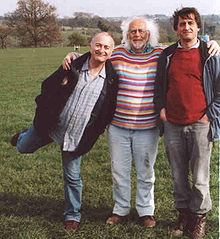I do not wish to come across as a TV reviewer, but I have spectacularly missed both the Festival of Archaeology and the Day of Archaeology this year, so I will write about the two classical documentaries I saw this week. Anyway, my day of archaeology seemed to be a déjà-vu, since I was proof-reading the article I was preparing last summer on that particular day. Not really progressed far, have I? I did not exactly have a riveting subject for a Day of Archaeology blog.
First I want to moan again about the ‘mystery’ formula the TV producers are using when approaching archaeological topics. The totally mesmerising find of X Tomb in Rome was turned into a ‘Who were they’ mystery that was not. I missed a bit from the beginning of the documentary and did not know where in Rome the site was. When it became clear that the place was on Via Nomentana and next to the Catacombs of S. Agnes and the mausoleum of S. Helena, the mother of Emperor Constantine, it became apparent that the origin of the deceased was not exactly a mystery to the French team excavating at the location. I quite like the presenter, Dr Michael Scott, and I am sure this story would have had legs as an interesting story without the artificial structure of the programme.
It was hugely interesting to see the skeletons piled up on top of each other, often in groups originating from certain frantic periods of action and spanning a couple of hundred years until about the end of the third century AD. It was mesmerising to hear about apparent shrouds that gave the bodies mummy-like appearance. Some of the burial cloths had gold threads sown or woven into them, so these were no paupers. Many bodies had ground amber around them. The burial customs are known from North Africa, with similar mummy-like bodies found from Tunisia and Algeria. The ancient DNA of the pathogens preserved by tiny amounts of blood in teeth showed that some of the larger simultaneously buried groups resulted from the epidemic of so-called Antonine Plague.
This was all very well, but the almost casual dropping of the fact in the end that the area by the Catacombs was the burial ground of the equites singulares, the cavalry arm of the praetorian guard that Constantine abolished, since they had supported his rival Maxentius. These elite horsemen came from different parts of the Empire, including North Africa and Central Europe that was also mentioned. Suddenly, the different complicated scientific analyses were not stabs in the dark, but very carefully considered methods in order to prove something that must have been obvious to the professional Romanists. The cemetery of the equites singulares was in use exactly during the time when the bodies were buried and where they were buried. Not a mystery after all.
On the other hand, a good example was provided by Mary Beard’s documentary on Caligula. She had her own approach that was highly source critical. She suggests opinions that the emperor had been slagged by the following generations in order to explain the killing of the emperor. However, she did not discuss the possibility that Caligula may have been mentally unstable and therefore became difficult for the others in the elite to bear. Nevertheless, we did get an interesting discussion, without endless mysteries and with visualisations of the boat finds at the Lake Nemi about the luxurious life the emperor led. Mary Beard suggested that in fact there was just more of the same for the state and nothing changed with the new government and Emperor Claudius. However, it is very difficult to say anything certain without new literary sources, although the contemporary sources do not emphasize any incestuous events. Nevertheless, the juicy stories of a decadent emperor are much more interesting that the power struggles of slightly over-the-top spenders.





